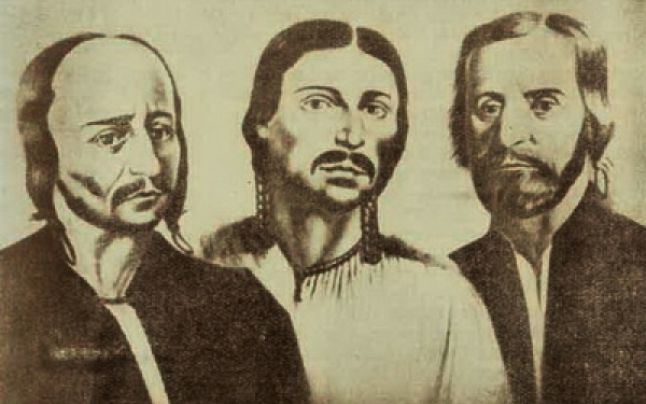 | ||
Similar 1907 Romanian Peasants, Peasant Revolt of Babolna, Romanian Revolution, Romanian War of Independence, Wallachian uprising | ||
The Revolt of Horea, Cloșca and Crișan (31 October 1784 – 14 December 1784) began in Zaránd County, Transylvania, but it soon spread throughout all Transylvania and the Apuseni Mountains.
The leaders were Horea (Vasile Ursu Nicola, 1731–1785), Cloșca (Ion Oargă, 1747–1785) and Crișan (Marcu Giurgiu, 1733–1785).
As long as the Gubernium and the military leadership debated about a possible intervention – awaiting the order from Vienna, the Hungarian nobility organized its defence, they trialed in Déva (Deva) and executed 56 captured peasants.
As Joseph II, Holy Roman Emperor ordered the army to intervene, the uprising was ended by Horea on 14 December 1784, at Câmpeni (German: Topesdorf; Hungarian: Topánfalva). Afterwards, in January 1785, the leaders were captured by treason. From the more than 600 captured rebels, 120 were sentenced; 37 death penalties were delivered initially but they were changed to imprisonment as a result of the amnesty of the emperor, with an exception regarding the three leaders. Horea and Cloșca were executed by the Hungarian authorities by breaking on the wheel on 28 February 1785 at Dealul Furcilor (Gabelberg, Forks Hill), Alba Iulia (Gyulafehárvár). Crișan hanged himself on the night before the execution.
